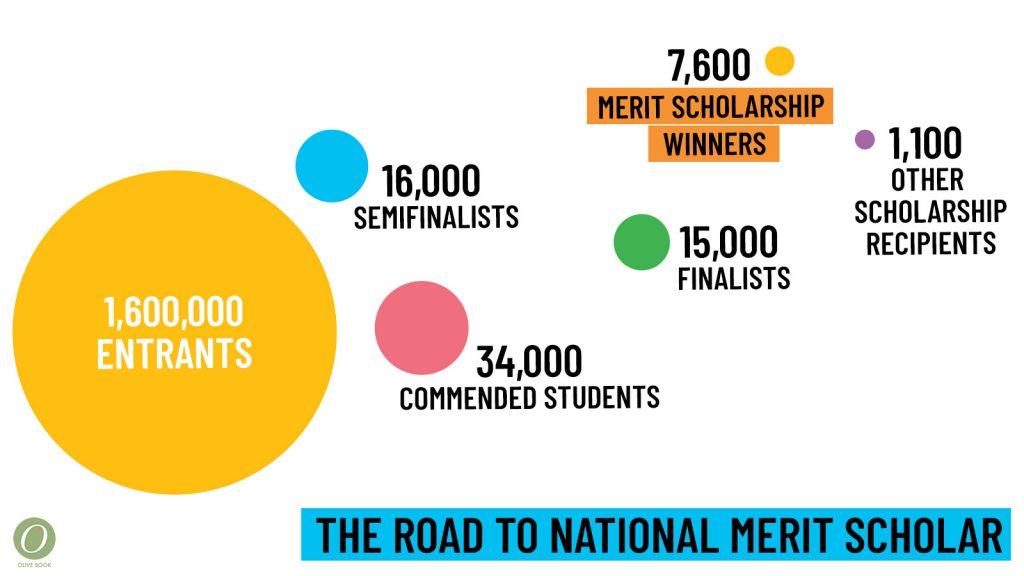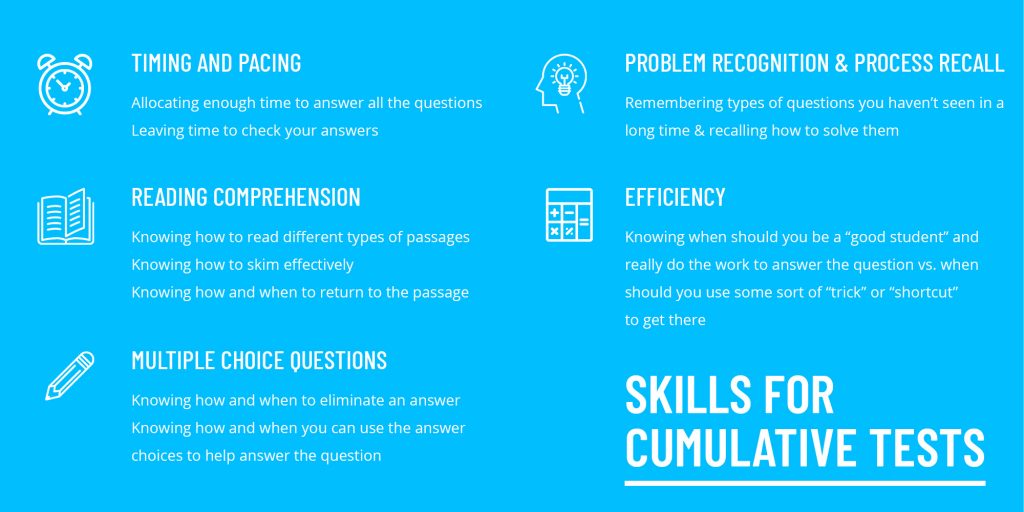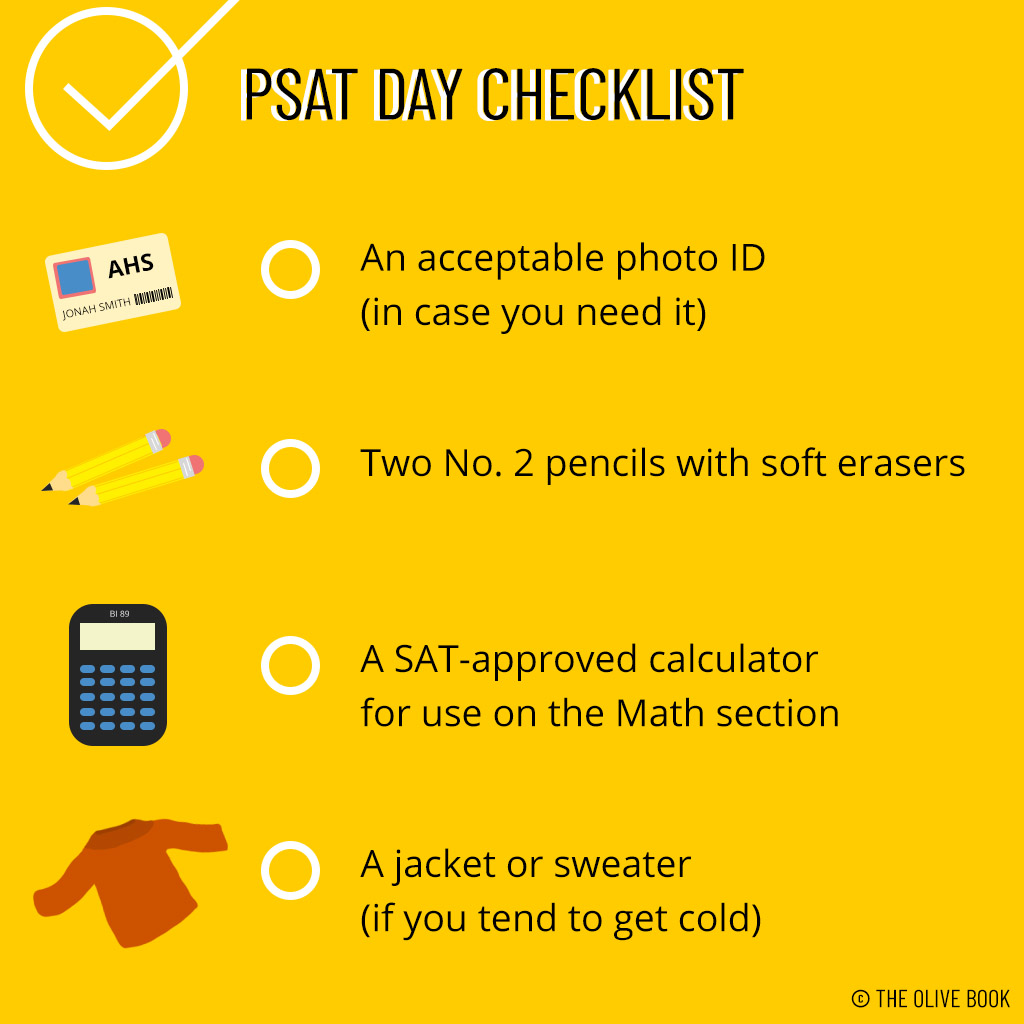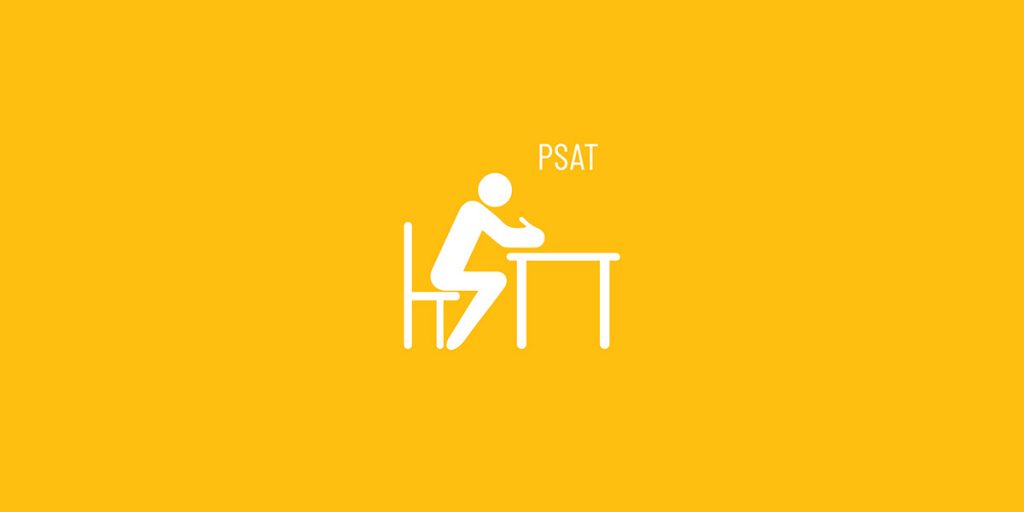The 2021 PSAT test is coming up on October 13. To help you prepare for the big day, we’ve created a rundown of what’s on the test, how it’s scored, and how you should prepare; not to mention some details on becoming a National Merit Scholar.
What’s inside this post:
- What is the PSAT?
- Who Takes It? Why Should I Care?
- About the National Merit Scholarship Program
- Where and When To Take the PSAT
- What to Expect
- How the PSAT is Scored
- What to Bring and What Not to Bring
- Should You Study for the PSAT?
What is the PSAT?
The PSAT is a practice SAT test usually given to sophomores and juniors in high school. There are two kinds of PSAT: the PSAT 10, which is for sophomores only and is purely a practice test, and the PSAT/NMSQT®, which is for students in their third year of high school (usually their junior year) and is both a practice test for the SAT and a means of entry into the National Merit® Scholarship Program.
The PSAT is very similar to the SAT in content and format. However, the content of the PSAT is slightly easier than the SAT and the PSAT is graded on a scale of 320 to 1520, while the SAT is graded on a 400-1600 point scale.
Who Takes It? Why Should I Care?
Sophomores can take the PSAT 10 and juniors usually take the PSAT/NMSQT®.
If you’re a sophomore taking the PSAT 10, the test is a great way to get your baseline SAT score and a helpful jumping-off point for future studying. It’s also a way to experience the testing environment without the added pressure of feeling like you need to get a certain score. The PSAT 10 doesn’t have much significance beyond that.
For juniors, the PSAT/NMSQT has a bit more weight. It’s important to try your best for the same reasons as the PSAT 10: getting an accurate baseline SAT score and experiencing the testing environment. However, there’s some added pressure if you’d like to be a competitive candidate for the National Merit Scholarship program. The score you make on the PSAT/NMSQT will determine if you are able to move forward in the scholarship process.
About the National Merit Scholarship Program
Becoming a National Merit Scholar starts with your PSAT score, but does not end there. Your score just qualifies you for entry into the competition. From there, a series of rounds cull the 1.6 million students who enter down to the 7,500 students that earn the distinction “National Merit Scholar,” awarded in the spring of your senior year of high school.
How to Become a National Merit Scholar
First, the National Merit Scholarship Corporation (NMSC) uses PSAT/NMSQT Selection Index (learn more about the selection index in the “Scoring” section of this post) scores to determine 50,000 high-scoring participants who qualify for program recognition.
Out of these 50,000 students, 16,000 of them will become Semifinalists. Semifinalists are the highest-scoring entrants in each state.
Semifinalists will be mailed additional application materials to fill out in order to advance to the Finalist stage; 15,000 Finalists will be chosen based on this application and academic requirements from the NMSC.
Of the Finalists, 1,100 will be designated as Special Scholarship recipients and 7,500 will earn the title of National Merit Scholar and one of three scholarships: the National Merit® $2500 Scholarship, a Corporate-sponsored scholarship, or a college-sponsored scholarship.

Where and When To Take the PSAT
You can take the PSAT test at your high school or a high school in your area, usually for free. A majority of schools offer the PSAT on the primary day, which for 2021 is Wednesday, October 13.
You cannot register for the PSAT on your own like you would the SAT. You must register through your local high school. If you’re uncertain whether your school will be administering the PSAT, or if you’d like to look for a list of schools in your area that will be administering it, use the College Board’s school search tool.
What to Expect
The PSAT is a timed test covering math, reading comprehension, and grammar skills. While the majority of the test is multiple-choice, there are also a few student-produced response questions in the math section, also known as “grid-ins.” You will need to produce your own response to these questions rather than choosing from a list of options.
Content
The content of the PSAT is very similar to the SAT, but slightly easier to account for your expected level of knowledge when you take the test. It tests information you’ve learned in high school and will be expected to know in college. And rather than studying by memorizing facts, the College Board recommends fighting for true understanding of topics.
As with all cumulative tests, the PSAT will test your ability to recognize problems in an unfamiliar environment and recall how to solve them.

The Reading Section
The Reading section is part of the Evidenced-Based Reading and Writing Section (EBRW). During the Reading section, you’ll read passages and interpret informational graphics, using what you’ve read to answer questions. Questions cover rhetorical skills, like determining the author’s tone, and analytical skills like determining the meaning of a word by its context.
There are five passages in the reading section:
- One passage from a classic or contemporary work of U.S. or world literature.
- One passage or a pair of passages from either a U.S. founding document or a text in the Great Global Conversation they inspired. The U.S. Constitution or a speech by Nelson Mandela, for example.
- A selection about economics, psychology, sociology, or some other social science.
- Two science passages (or one passage and one passage pair) that examine foundational concepts and developments in Earth science, biology, chemistry, or physics.
The Writing and Language Section
The Writing and Language Test is also part of the Evidence-Based Reading and Writing section. In this section, you will be given passages to edit for grammar and style. These passages contain purposeful errors and test your ability to identify and fix them. They cover a variety of topics, from arguments to nonfiction narratives, and all questions are multiple-choice and based on the passages.
Learn more about what this section addresses specifically here.
The Math Section
The Math test is multiple choice and divided into two portions: with calculator and without calculator. You can use an SAT-approved calculator on the calculator section, but not on the no-calculator section.
There are also a few student-produced response questions in the math section, known as “grid-ins.” You will need to produce your own response to these questions rather than choosing from a list of options.
The Math section will test cover you’ve learned throughout high school and test your ability to recognize and solve problems. The test focuses on three main areas:
- Heart of Algebra, which focuses on the mastery of linear equations and systems.
- Problem Solving and Data Analysis, which is about being quantitatively literate.
- Passport to Advanced Math, which features questions that require the manipulation of complex equations.
*The Math Test also draws on Additional Topics in Math, including the geometry and trigonometry most relevant to college and career readiness.
Unlike the ACT, the PSAT (and SAT) provide you with a formula chart in your test booklet!
Timing
The PSAT lasts 2 hours, 45 minutes and contains a total of 139 questions. The test is broken up as below:
| Section | Time Allowed | Number of Questions |
| Reading | 60 minutes | 47 |
| Writing and Language | 35 minutes | 44 |
| Math | 70 minutes | 48 |
| Total | 165 minutes | 139 questions |
How the PSAT is Scored
PSAT scoring works a little differently than the SAT; because the content of the PSAT is slightly easier than the SAT, the PSAT is graded on a scale of 320 to 1520, while the SAT is graded on a 400-1600 point scale.
Scaled Scores vs. Test Scores
For scoring, the test is divided into two sections: Evidence-Based Reading and Writing and Math (your Evidence-Based Reading and Writing score combines the scores for the Reading section and the Writing and Language section). You can earn up to a 760 on these two sections, for a composite scaled score of up to 1520.
Although they have slightly different score ranges, according to The College Board, “the total, section, test, and cross-test scores have been vertically scaled to allow the accurate measurement of growth from test to test.” Therefore, you can use your PSAT score to accurately predict how you’ll do on the SAT. For example, if you get a 500 on the PSAT math section, you can expect to get a 500 on the SAT math (unless, of course, you improve between testings!)
Your scaled score is determined by your individual test scores (for Reading, Writing, and Math) which can range from 8–38. These individual test scores are each multiplied by 10 or 20 to result in your scaled score; to get your scaled Math section score from your individual test score, just multiply your Math test score by 20. To get your scaled Evidence-Based Reading and Writing score, add your Reading and Writing test scores together and then multiply the sum by 10.
For example, if you got a 23 on the Reading section and a 20 on the Writing section, your scaled score would be 2(23+20)= 430. If you got a 26.5 on Math, then your scaled score would be 2(26.5) = 530. Just add these two scaled scores together for your composite scaled score: 960.
What’s a Good PSAT Score?
What defines a good PSAT score depends on your goals.
Do you want to be a National Merit Scholar? If so, you will need to score in the 97th-99th percentile of test-takers, which is a score of 1410-1520, in order to be competitive.
Just trying to figure out how much you need to study for the SAT? The average PSAT score is 1014. If you are scoring in this range, you’re on the right track. With a focused study plan, you could be scoring well above average when you actually take the SAT!
Should You Study for the PSAT?
What is the Selection Index?
The Selection Index determines the 16,000 Semifinalists who will move on in the National Merit Scholarship competition. It is reported on a scale from 48 to 228 and is calculated by doubling the sum of the Reading, Writing and Language, and Math Test scores.
Each year, the National Merit Scholarship Corporation determines Selection Index cutoff scores for each state. Compass Prep has created a helpful chart comparing this year’s scores to the past three years scores for every state, which you can use to get an idea, from year-over-year data, of what Selection Index score you need in order to become a Semifinalist.
To calculate your own Selection Index score, add up the individual test scores you received for each section and multiply the sum by 2. For example, if you got a 28 on the Reading test, a 30 on the Writing and Language test, and a 35 on the Math test, your Selection Index score would be 2 (28+30+35) = 186.
Learn more about how the PSAT is scored in this guide from The College Board.
What to Bring and What Not to Bring

On test day, you should bring:
- an acceptable photo ID in case you need it
- two No. 2 pencils with soft erasers
- a SAT-approved calculator for use on the Math Test
a mask/face covering.
Don’t bring to bring anything that’s not on the above lists, especially your cell phone, any books, or electronic devices. Ask your test administrator if you have any questions about what to bring, or consult this list.
Should You Study for the PSAT?
Whether you’re interested in competing to be a National Merit Scholar or not, we recommend that you take a look at a practice test before the day of the PSAT so you have an idea of the format and content of the test. Lucky for you, The College Board has two official practice tests you can download and print here! As you look over the test, take note of the kinds of questions that are asked, the length of the reading passages, and your ability to read any charts and graphs that are present.
If you want to be a National Merit Scholar, you may need to invest some time in studying for the PSAT the summer before your junior year in order to be competitive. The score you need to qualify to compete for the scholarship depends on the Selection Index for your state. Luckily, Compass Prep has created a helpful chart comparing this year’s scores to the past three years scores for every state, which you can use to get an idea, from year-over-year data, of the Selection Index score you need in order to become a Semifinalist.
The best way to study for the PSAT is to study for the SAT. The College Board has a host of resources for studying, which you can find here. Or, you can enroll in our animated, online SAT course to get a head start on important concepts. Learn more about our SAT course here.
